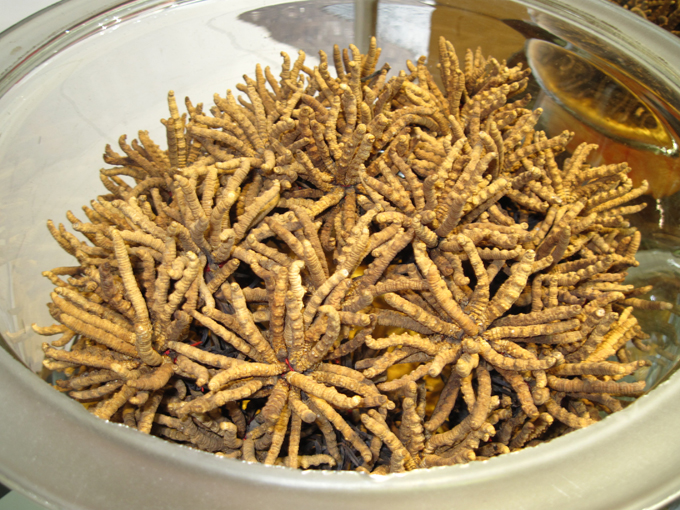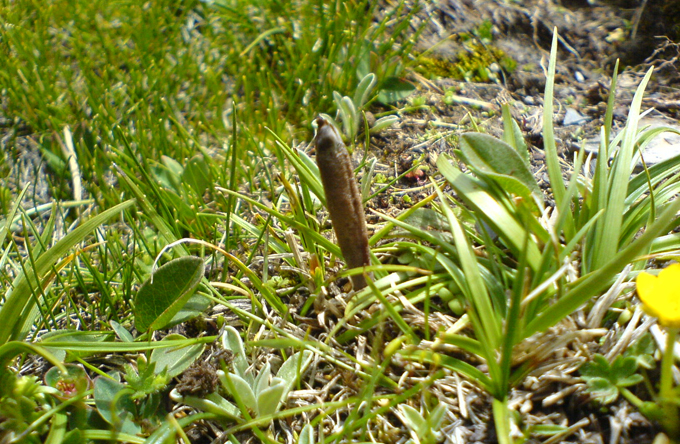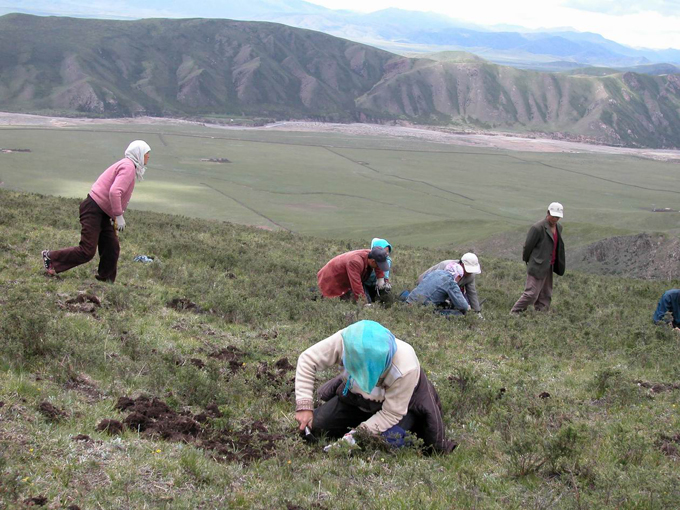Chengdu
Pandas' Hometown
Jiuzhaigou
Famous Fairyland
Emeishan
Sacred Buddhist Site
Leshan
Giant Buddha
Gonggashan
Best for Hiking
Daocheng Yading
Shangri La Views
Dujiangyan
Irrigation System
Siguniangshan
Eastern Alps
Medicinal Cordyceps is also called Dongchongxiacao (Caterpillar Fungus) by Chinese and Yartsa Gunbu by Tibetans. It is a very expensive traditional herbal medicine in both Tibet and China. It is widely believed to be a more effective medicine than Ginseng. According to Chinese philosophical idea of medication, this medicinal cordyceps is also used as food in Shiliao, the food therapy. The uncovered effects of Caterpillar Fungus include enhancing human immune system, especially kidney and lung performance, and a strong inhibiting effect towards lung cancer and liver cancer.

The medicinal cordyceps is a caterpillar in winter and became fungus in summer; therefore it is called caterpillar fungus. The lower part of the fungus still resembles a caterpillar while it has a strap of fungus coming out of its head. The length of a piece of cordyceps is normally between 5cm and 10cm depends where it is from.
But where can we find these funguses? It was a question been asked by ancient Chinese people as well. It was quite mysterious about the origin of medicinal cordyceps. At every summer at the elevation over 3800 meters when the snow melts, the ghost moths will lay eggs on the grass and flowers for hatching. The hatched caterpillars find their way into the ground and suck the juicy roots and get parasitized by the fungus under ground. After worth, a fruiting body is produced. The worm will usually manage to move some distance (2-3cm to the surface of ground) before they die, usually heads up and tail down. Here is the caterpillar. And the fungus grows in the body of the caterpillar gradually through the winter. And when it comes to the end of spring, a purplish sprout comes out of the mummified worm and reaches 2 to 5 cm above ground. Then this is the fungus. The end of each spring and the beginning of each summer are the best seasons to collect these funguses. The major production areas include Tibet, Qinghai Province, northern Yunnan Province and Sichuan Province.

About 40% of the medicinal yartsa are produced in Tibet, about 30% are from Qinghai Province, and about 20% are come from Sichuan Province. The rest are from Gansu and Yunnan Province.
The Yartsa collecting time is April and May each year when the snow melts. If collected after this season, most fungus will dry and die and covered by other fast-growing leafy grass.

It is very difficult to collect caterpillar fungus. Even with good eye-sight, one has to bow down to get closer to the ground to search. Normally if you find one piece there are usually other dozen pieces around this one within 1 sqm. And when you dig the herb, you also need to be very careful because broken yartsa worth much less than when they are in one full piece.
Medicinal Cordyceps are considered one of the best traditional medicines in China. It is therefore very expensive, let alone it is difficult and collect and the number is small. Here is a reference of the prices in 2015 in different categories.
a) Of sizes 4 pieces per gram, every 100 grams cost about 13000 Chinese yuan.
b) Of sizes 6 pieces per gram, every 100 grams cost about 9000 Chinese yuan.
4 pieces per gram means they are bigger in size than the 6 pieces per gram yartsa. It is normally more expensive when the size is bigger. The biggest pieces are about 2 pieces per gram and the smallest pieces are about 8 pieces per gram.